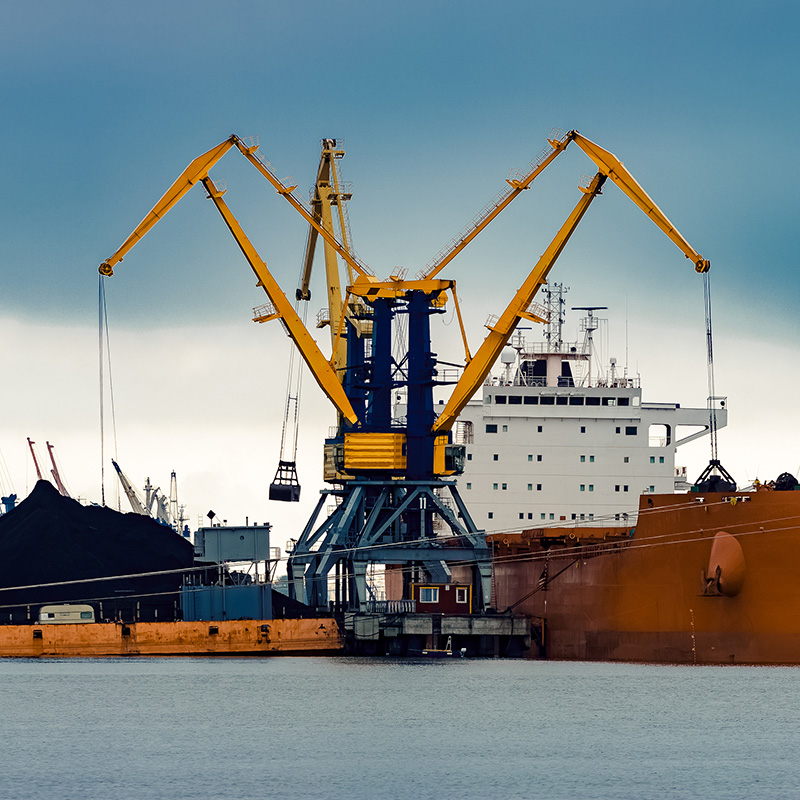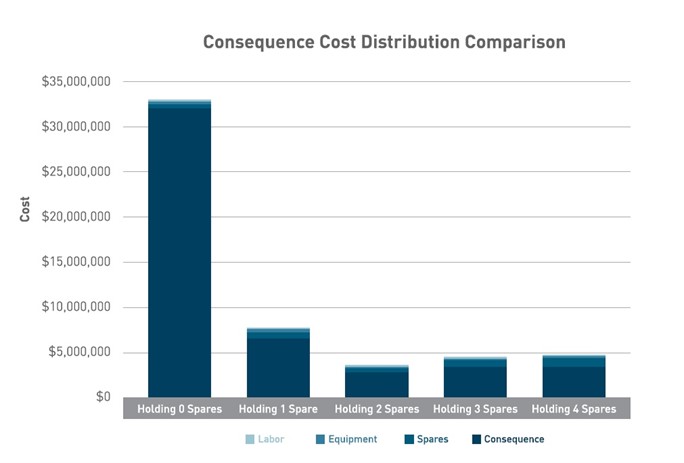
A coal terminal had three ship loaders in service. The telechutes on these ship loaders were programmed for change-out after a minimum of 125 million tonnes in service, depending on wear; and the business currently stocked one spare telechute onsite.
The business sought to investigate the risks associated with the current spare stock level and, if warranted, develop a business case to justify the purchase of an additional telechute to act as a spare for the ship loaders.
The Problem
On more than one occasion, one of the operating telechutes became faulty or damaged and became inoperable before it was scheduled for changeout. The most common reason for this damage was wear and tear to the bottom segment rotating frame.
With three ship loaders in service, only one spare available and a repair time of approximately two months for a damaged telechute, the risk of unavailability to the business was significant. This could result in a potential throughput loss of 4,735,160 tonnes or 8.27 million dollars in the two months required to source and repair the telechute.
The coal terminal thus sought to determine the optimum number of spares to hold onsite.
The Solution
ARMS Reliability was engaged to perform a Spares Optimization Analysis on the ship loader telechute. The goal was to determine an acceptable risk mitigation strategy based on spares holding levels, and identify the optimum number of spare telechutes to hold onsite.
Two studies were conducted as part of the analysis - Availability Modeling and a Failure Modes, Effects and Criticality Analysis (FMECA) study.
First, to measure the cost impact of failures, a FMECA study was performed for key pieces of equipment.
This study looked at:
Identification of the dominant deterioration mechanisms (Those failures which resulted in replacement of telechute)
- Failure rate behavior
- Telechute capital cost
- Telechute average repair costs
- Estimate of maintenance costs
- Estimates of failure impacts on safety, environment and production losses
Then, five availability models were developed to assess alternative scenarios and determine the optimum cost and risk scenario for the business. The modeling was then used to evaluate the impact of holding varied number of spares, against the business requirements.
The five availability models were included:
Zero spares held onsite
This model assumes that the faulty telechute is removed from the ship loader, taken away for repair (incurring two months of downtime on the ship loader), then replaced on the ship loader once repaired. It essentially evaluates the 'worst case' scenario
One spare held onsite
This model uses the onsite spare and sends the damaged telechute offsite for two months to get repaired. During this time, if another telechute is damaged and unable to perform its function, then the model assumes that the business loses availability on that ship loader until the repaired telechute returns to site.
Two spares held onsite
This model uses one of the onsite spares and sends the damaged telechute offsite for two months to get repaired. During this time, if another telechute is damaged and unable to perform its function, then the model uses the second spare telechute and again sends the damaged one away for a two-month offsite repair job. While both telechutes are offsite (leaving no spare onsite), if a third telechute cannot perform its function, then the model assumes lost availability until one of the repaired telechutes returns to site.
Three spares held onsite
The model uses one of the onsite spares and sends the damaged telechute offsite for two months to get repaired. During this time, if a second or third telechute is damaged and unable to perform its function, then the model uses the second and third spares, sending the damaged telechute(s) away for repair. The model then assesses the unavailability impact if all three spare telechutes are offsite being repaired.
Four spares held onsite
The model uses one of the onsite spares and sends the damaged telechute offsite for two months to get repaired. During this time, if a second, third or fourth telechute is damaged and unable to perform its function, then the model uses the second, third and fourth spares, sending the damaged telechute(s) away for repair. The model then assesses the unavailability impact if all four spare telechutes are offsite being repaired.
The Outcome
The modeling revealed the costs and plant availability over a 10 year lifetime for each scenario. From this it was predicted that the optimal number of spare telechutes for the business was two (Refer to Chart 1). With two spares held onsite, there would be an optimum increase in availability of all three ship loaders as well as a significant decrease in the unavailability of the ship loaders due to telechute issues.
Following completion of the project, the results of the report were used as a key element of a business case to support the purchase of a second telechute.


Questions? We'll put you on the right path.
Ask about our Spare Parts Analysis services and supporting technical solutions. We are ready to help.
contact us
